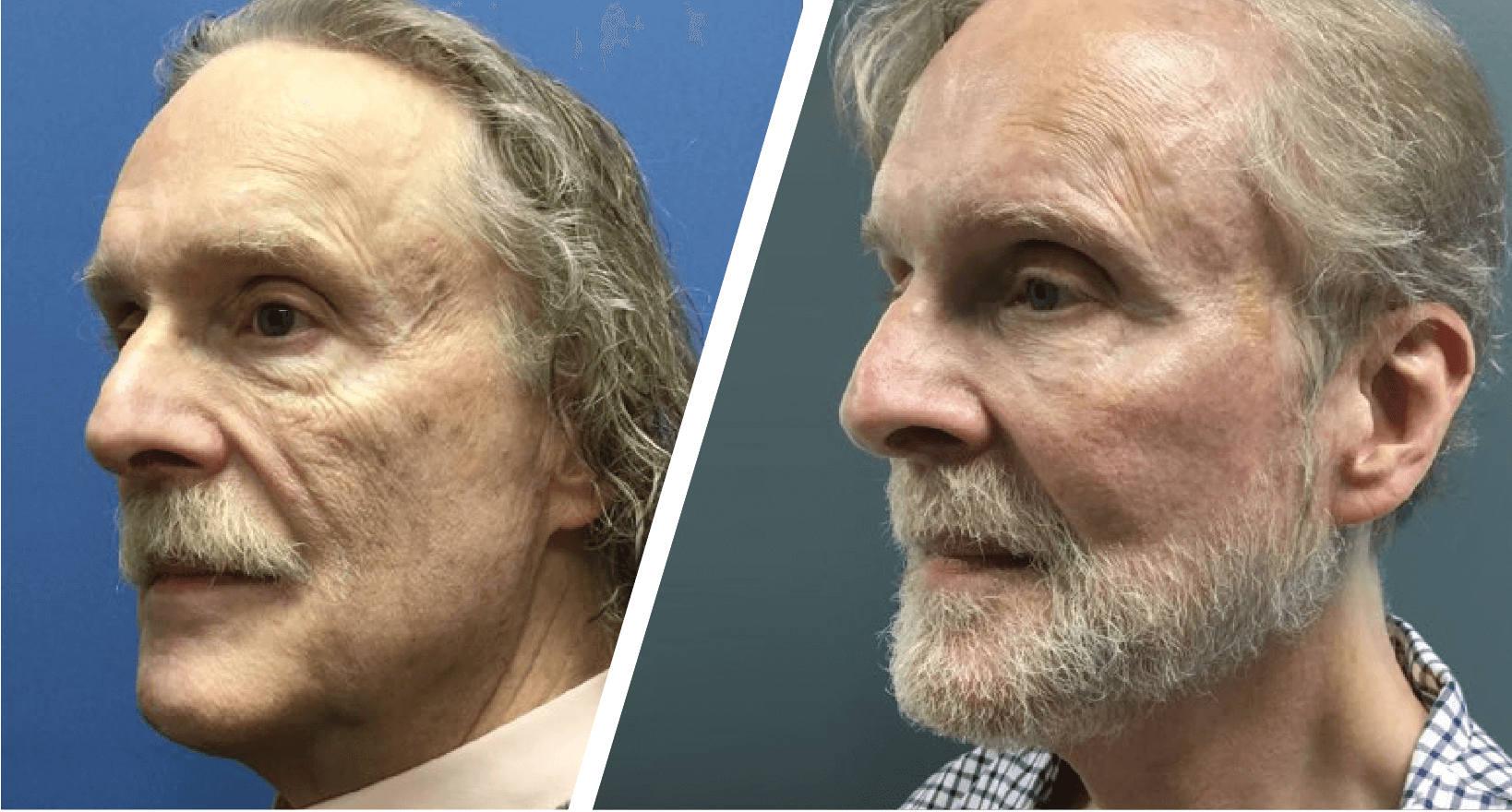 Breast reduction surgery, also known as reduction mammoplasty, removes extra breast tissue and fat to restore a balanced breast that is proportional to the rest of the body.
Breast reduction surgery, also known as reduction mammoplasty, removes extra breast tissue and fat to restore a balanced breast that is proportional to the rest of the body.
Overly large, pendulous breasts can be damaging to women emotionally and physically. Often times back pain, breast pain, shoulder pain, headaches, neck pain and rashes prompt women to inquire about reduction surgery. Many times patients have tried other therapies such as chiropractic treatments, physical and occupational therapy and weight reduction prior to seeking surgical relief. The goal of breast reduction surgery is not just to reduce the size of the breast, but also to improve the patient’s self-esteem and quality of life.
Breast reduction surgery is most often performed with three incisions: one that runs around the areola, one vertically from the areola to the fold of the breast, and one horizontally at the fold of the breasts. The resulting scar, called a wise skin pattern, is often referred to as an “anchor” or “inverted T” incision. There are a number of other types of incisions that may be utilized, but this is the most common.
During most types of breast reduction the nipple is not removed from the breast, but is reduced in size and repositioned higher. Sometimes a very large breast may require a different type of reduction called a free nipple graft, which removes and repositions the nipple altogether. In a free nipple graft, although the patient loses sensation and the ability to breast feed, these negatives are outweighed by the predictability of healing and improved cosmetic outcome.
Am I a good candidate for breast reduction surgery?
Patients that are good candidates for breast reduction surgery should have a realistic body image and realistic expectations of what a breast reduction surgery can achieve for them. Although breast reduction surgery does lift the breast and improve the appearance of loose or sagging breasts, the main motivation for seeking a reduction should be breasts that are out of balance to your body and interfere with your daily activities of life.
If you have a family or personal history of breast cancer it may be required to have a mammogram prior to surgery and a consultation with medical cancer specialist.Dr. Bortnick will help you determine if you are a good candidate.
For all elective surgeries, we recommend:
- Patients must be aware of the known negative effects of any surgery, including pain, cost, recovery time and scarring, and the known risks of surgery.
- Patients should lead a healthy lifestyle, and be healthy both medically and emotionally. Any surgery is a trauma to the body, so it is important to be in good health before the procedure.
- Patients should be at a point in their lives where inconveniences to job responsibilities and family obligations are minimized.
- It is imperative that cosmetic surgery patients be non-smokers, as nicotine delays the healing process.
Additionally, for breast reduction procedures, we recommend:
- Patients should be at or near their ideal body weight
- Patients must be willing to tolerate scars on the breasts, which are usually fine line and thin but will always be apparent.
- Patients should be willing to take the risk of decreased or altered sensation to the nipple and more difficulty with breast feeding.
Breast reduction surgery is not meant to be a substitute for a healthy life style. However, it may contribute to your ability to exercise, and enrich the quality of your life physically and emotionally.
What should I expect during the consultation?
 You should expect to spend 30-45 minutes at the consultation. So that you don’t feel hurried during your first visit, we have important information listed in the Patient Resources section of the website, including forms to be filled out, information on surgical risks, and pre-care and post-care instructions.
You should expect to spend 30-45 minutes at the consultation. So that you don’t feel hurried during your first visit, we have important information listed in the Patient Resources section of the website, including forms to be filled out, information on surgical risks, and pre-care and post-care instructions.
Before the consultation, take some time to think about your life situation. You will need to plan for a few days off work, and time to take care of yourself and not others. You should consider the timing of the surgery in relation to your plans for family and child birth, as a breast reduction my make it difficult or impossible to breast feed. Additionally, if sensation to the nipple is a vital part of your life, make certain you discuss this with Dr. Bortnick as nipple sensation may be decreased by the surgery.
Also, it’s important to be prepared to discuss both the physical and emotional issues motivating your consultation. While it can be hard to talk about such private matters with a doctor or nurse, it’s important to be open about your motivations, so that we can be realistic about what the surgery will achieve for you.
The information gathered during your visit will be used to write a letter on your behalf to your insurance company. The costs associated with reduction mammoplasty can often be covered under your insurance benefits. Wide variation exits among different insurance carriers as to what may be a “covered” procedure. Please understand that costs and coverages alone should never make you seek the wrong procedure, as there will be significant adjustments in self image after the surgery.
Photographs and detailed measurement of your breasts will be taken during the initial consultation. These will be used in surgical planning, and are required part of your medical record for insurance purposes. You will be given an estimate of the amount of reduction that is recommended and the resulting breast size anticipated. Although we can’t make guarantees on the outcome of your breast size, shape, or scarring, we will fully explain the likely general outcome of the surgery and what you should be able to expect.
How is the surgery performed?
Breast reduction surgery is performed in an accredited surgical facility, generally as an outpatient surgery so that you can go home the same day. The surgery requires general anesthesia administered under the direction of a board certified anesthesiologist. Recovery from the surgery is usually mild. Pain medications are rarely required for more than a few days, and return to work can usually be anticipated within 72 to 96 hours.

